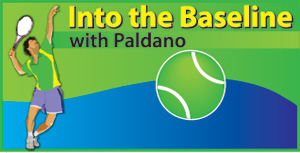Impact of European Tennis season
View(s):In 2017, for the professional players the next six months in the European arenas are the most important in terms of rankings. The achievements in this period of six months will affect their status and the earnings. The dominant period in Tennis has always been the European season serving as inspiration to the world for over one hundred years. March marks the opening of the European season. Events in the next eight weeks act as a spring board into the Europe’s long clay and the short grass court seasons.
 Europe which is still in cold weather is using their indoor facilities to stage events with limited entries. A good number of players like to play closer to home than to travel during this time. Sustaining fitness is a strenuous and physical burnout before the season is over is a real issue to players. It is in these backdrops the players will have approach the European season.
Europe which is still in cold weather is using their indoor facilities to stage events with limited entries. A good number of players like to play closer to home than to travel during this time. Sustaining fitness is a strenuous and physical burnout before the season is over is a real issue to players. It is in these backdrops the players will have approach the European season.
Clay court season
French-Open in Paris is the only clay court Grand-Slam event. For world rankings it is compulsory for the players. Traditionally French-Open begins in the last week of May. Which means every event from now on is a preparation for this second Grand-slam of the year. On the run to it players will scatter and the top guns will go for the ones with a rich purse. To get a good ranking important aspect is consistency in reaching quarters, semi and finals. It is this that gives the good ranking position and steadier earning than big wins.
With super athlete-ship of the modern day players rallies are longer even on a fast court. On clay this shot count will get extended further and creates two disadvantages. First is the physical breakdown and other is the exhaustion will need longer breaks between matches which may not be available. The number of players getting burnt out on clay court is very high, as the games are ground stroke oriented. Any ground stroke tactic on clay needs lot of patience and repeated physical effort.
New range of equipment
There is always development in racket technology. Lighter rackets are an attraction among the amateurs but it does not mean they are the best. Little heavier rackets are steadier to swing but of course they will tire the arm quicker. The rackets professional use are custom made and are not available to all. Having used one of them, I must say unless the player is built well it is not possible to play with them. They are very heavy and stiff to play but gives excellent control and speed.
Great deal of research goes into making the best synthetic rackets. Any good player, even recreation player will identify the difference in string pattern, width of frame, and chemical fiber combination of the material used in a modern racket. As far as I know there are three factories doing all the racquet of the elite players worldwide. Research for the big names in racket making are the work of laboratories developing synthetic material. Often players choice does not only depends on racquet quality but also on the sponsorship package.
Technology and Stroke technique
The nature of the racquets has immense impact on the stroking techniques of Tennis. The traditional strokes were for wooded racquets. These racquets did not produce much power and demanded longer swings and body power support and longer time to execute a shot. The average speed of the ball today travels nearly three to four times faster than in the sixties mostly due to the development in the racquet technology and synthetic surfaces. This has taken out the luxury of time. Even at recreational level the game is faster now due to these. The use of the double handed backhand, use of dynamic balance, open stance in execution and the use of forehand to most part of the court are result of technology in racket making.
It is in this backdrop the 2017 European season will be played. Famous cities of Europe Rome, Madrid and Monte Carlo, Hamburg and few others will precede French-Open in Paris. These venues will see newcomers with powerful build having speed and the tactical ability challenging reputed players. The big four names of the recent years, Murray, Djokovic, Federer and Nadal have shown a new wave of enthusiasm and ability in Australia and in the southern venues where the weather is warm.
Russian born German now living in Monte Carlo, Misha Zeverev is proving serve and volley is still possible even in the current ground stroke oriented game of Today. He has beaten big names and his losses are mostly with one service break per set. His success rate could bring the net game back in Tennis. To me he looked very comfortable playing against Murray whom he beat, Federer in Australia and Nadal in Acapulco. On the whole the new players have come from European countries and are prospects for the top five positions in the ranking.
Tennis will reveal all its future prospects in women and in Men in this year’s European season. Although it is difficult to pin point the emerging names Austria’s Thiem and Belgium’s Goffin are two to watch on the men’s side.
–George Paldano, Former intl. player; Accredited Coach of Germany; National, Davis-Cup, Federation Cup captain/coach– georgepaldano@yahoo.com


